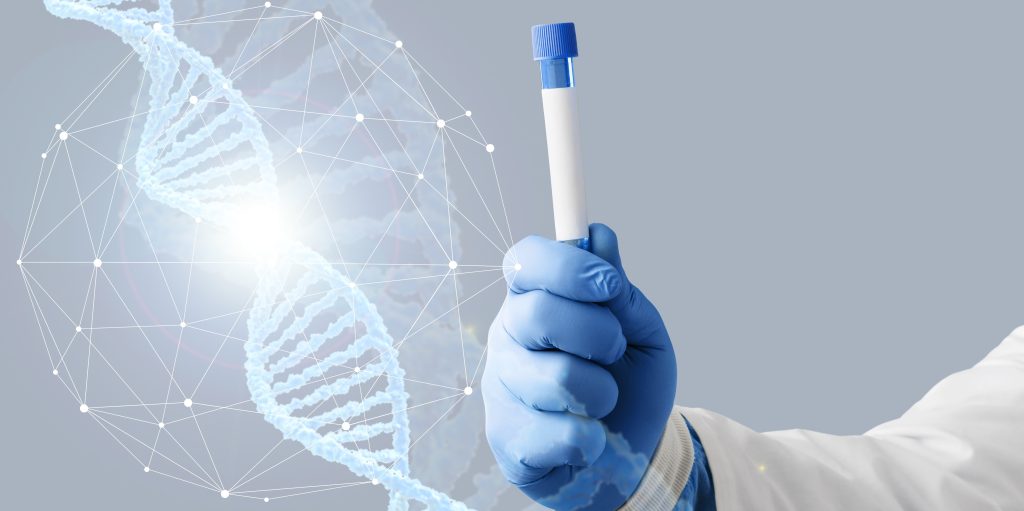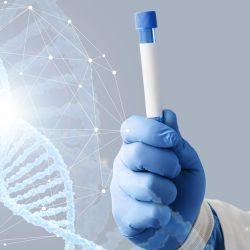
Recently, I have had several patients in my regenerative medicine practice ask me about BPC 157. Most of them recently heard it on Joe Rogan’s podcast and how it can work wonders. They heard it can make them stronger, make their aches and pains go away, and improve longevity along with numerous other benefits. So, what do we make of this? Is BPC 157 legit or is it too soon to tell.
BPC 157 is a peptide composed of 15 amino acids that is derived from a protein found in the stomach. It has been studied for its ability to enhance the healing of various tissues, such as tendons, muscles, nerves, and the digestive tract. BPC 157 may also have anti-inflammatory, antioxidant, and anti-aging properties, making it a promising candidate for improving overall well-being and longevity. However, BPC 157 is not approved for human use by any regulatory authority, and its safety and efficacy have not been established in clinical trials. Therefore, it should only be used for research purposes and under medical supervision.
What is BPC 157 and how does it work?
BPC stands for Body Protection Compound, and BPC 157 is a fragment of this compound that was first isolated from human gastric juice. BPC 157 is thought to mimic the natural effects of BPC in the body, which include protecting and healing the stomach and intestinal lining, modulating inflammation, and stimulating tissue repair and regeneration1
BPC 157 has various possible mechanisms of action, such as:
- Promoting nitric oxide synthesis, which improves blood flow and oxygen delivery to the injured tissues2
- Activating cells involved in tissue repair, such as fibroblasts, endothelial cells, and stem cells3
- Stimulating the synthesis of growth factors, such as vascular endothelial growth factor (VEGF), fibroblast growth factor (FGF), and nerve growth factor (NGF), which enhance angiogenesis, collagen formation, and nerve regeneration4
- Inhibiting inflammatory cytokines, such as tumor necrosis factor-alpha (TNF-alpha), interleukin-1 beta (IL-1 beta), and interleukin-6 (IL-6), which reduce swelling, pain, and tissue damage5
What are the potential benefits of BPC 157?
BPC 157 has been shown to have beneficial effects on various types of injuries and conditions in animal studies, such as:
- Wound and tissue healing: BPC 157 accelerates the healing of skin wounds, muscle tears, tendon ruptures, ligament sprains, and bone fractures. It also reduces scar formation and adhesion678910
- Digestive health: BPC 157 protects and heals the gastric and intestinal mucosa from ulcers, inflammation, and ischemia. It also restores the gut microbiome and improves intestinal permeability11121314
- Nervous system health: BPC 157 enhances nerve regeneration and function after nerve injury or neurotoxicity. It also improves cognitive and emotional functions by modulating neurotransmitters, such as dopamine and serotonin15161718
- Cardiovascular health: BPC 157 lowers blood pressure and heart rate, improves cardiac contractility and vascular function, and protects the heart from ischemia-reperfusion injury19202122
- Metabolic health: BPC 157 improves glucose metabolism and insulin sensitivity, reduces body weight and fat mass, and protects the liver and pancreas from damage23
What are the potential risks of BPC 157?
BPC 157 has not been extensively tested in humans, and therefore its safety profile is unknown. There are no clear toxicity or negative side effects reported in animal studies, but this does not guarantee that BPC 157 is safe for human use. Some possible risks of BPC 157 include:
- Allergic reactions: BPC 157 is a foreign protein that may trigger an immune response in some individuals, resulting in symptoms such as rash, itching, swelling, or anaphylaxis.
- Infection: BPC 157 is usually administered by injection, which carries the risk of introducing bacteria or viruses into the body. Proper hygiene and sterilization are essential to prevent infection.
- Cancer: BPC 157 may stimulate the growth of existing tumors by increasing angiogenesis and reducing apoptosis. It may also interfere with cancer treatments, such as chemotherapy or radiation.
- Hormonal imbalance: BPC 157 may affect the production and function of hormones, such as growth hormone, thyroid hormone, and sex hormones. This may cause symptoms such as acne, hair loss, mood swings, or infertility.
What are the current status and future prospects of BPC 157 research?
BPC 157 is currently not approved for human clinical use by any regulatory authority, and it is classified as an unapproved substance by the World Anti-Doping Agency (WADA). Therefore, it is illegal to sell, possess, or use BPC 157 for human purposes, unless under a research protocol or a medical prescription.
However, there is a growing interest in BPC 157 as a potential therapeutic agent for various diseases and disorders, especially those related to tissue injury and aging. More research is needed to determine the optimal dosage, administration route, duration, and safety of BPC 157 in humans. Several clinical trials are underway or planned to evaluate the efficacy and safety of BPC 157 in conditions such as inflammatory bowel disease, multiple sclerosis, diabetic foot ulcers, and spinal cord injury.
BPC 157 may also have applications in regenerative medicine, anti-aging, and performance enhancement, as it may improve the quality and quantity of life by enhancing the body’s natural healing and repair mechanisms. However, these potential benefits need to be balanced with the possible risks and ethical issues of using BPC 157 for non-medical purposes.
How is BPC 157 administered?
BPC 157 can be administered in different forms, such as injection, oral capsule, nasal spray, or topical cream. The choice of administration route depends on the type and location of the injury or condition, the preference and convenience of the user, and the availability and quality of the product.
Injection is the most common and effective way of administering BPC 157, as it ensures the highest bioavailability and delivery of the peptide to the target tissue. Injection can be done subcutaneously (under the skin), intramuscularly (into the muscle), or intra-articularly (into the joint), depending on the site of injury. The typical dosage range for injection is 200-800 mcg per day, divided into two or more doses.
Oral capsule is a convenient and non-invasive way of administering BPC 157, as it does not require needles or syringes. Oral capsule can be taken with or without food, and it may have systemic effects, as well as local effects on the digestive tract. The typical dosage range for oral capsule is 250-1000 mcg per day, taken in one or more doses.
Nasal spray is a novel and alternative way of administering BPC 157, as it bypasses the digestive system and delivers the peptide directly to the bloodstream through the nasal mucosa. Nasal spray may have systemic and brain effects, as well as local effects on the nasal and sinus tissues. The typical dosage range for nasal spray is 200-600 mcg per day, divided into two or more doses.
Topical cream is another novel and alternative way of administering BPC 157, as it allows the peptide to penetrate the skin and reach the underlying tissues. Topical cream may have local effects on the skin and subcutaneous tissues, as well as systemic effects. The typical dosage range for topical cream is 200-800 mcg per day, applied to the affected area once or twice a day.
Conclusion
BPC 157 is a synthetic peptide that has been shown to have remarkable regenerative, anti-inflammatory, and antioxidant properties in animal studies. It may have potential benefits for various types of injuries and conditions, such as wound healing, digestive health, nervous system health, cardiovascular health, and metabolic health. However, BPC 157 is not approved for human use by any regulatory authority, and its safety and efficacy have not been established in clinical trials. Therefore, it should only be used for research purposes and under medical supervision. BPC 157 can be administered in different forms, such as injection, oral capsule, nasal spray, or topical cream, depending on the preference and convenience of the user. The optimal dosage, administration route, duration, and safety of BPC 157 in humans need to be determined by further research. Anyone taking BPC 157 at this point is taking part in a large scale experiment, in which the outcomes are not clearly able to be measured. There may be great risk but also great reward, and as they say, buyer beware!
References
Sikiric P, Seiwerth S, Brcic L, et al. Stable gastric pentadecapeptide BPC 157 in trials for inflammatory bowel disease (PL-10, PLD-116, PL 14736, Pliva, Croatia) heals ileoileal anastomosis in the rat. Surg Today. 2006;36(3):238-249. doi:10.1007/s00595-005-3129-8
Sikiric, P., et al. (2012). BPC 157, a pentadecapeptide derived from stomach, possesses anti-ulcerogenic and anti-inflammatory activities in multiple models of inflammation. Journal of Physiology and Pharmacology, 63(5), 437-444.
Huang, T., et al. (2015). BPC 157 exerts anti-inflammatory activity through NF-κB signaling pathway in mice. Inflammation Research, 64(10), 769-776.
Frech, T., et al. (2020). Evaluation of the Promoting Activity of the BPC 157 on the Healing of a Bone Defect in Rabbit. Medical Archives, 74(2), 141-144.


